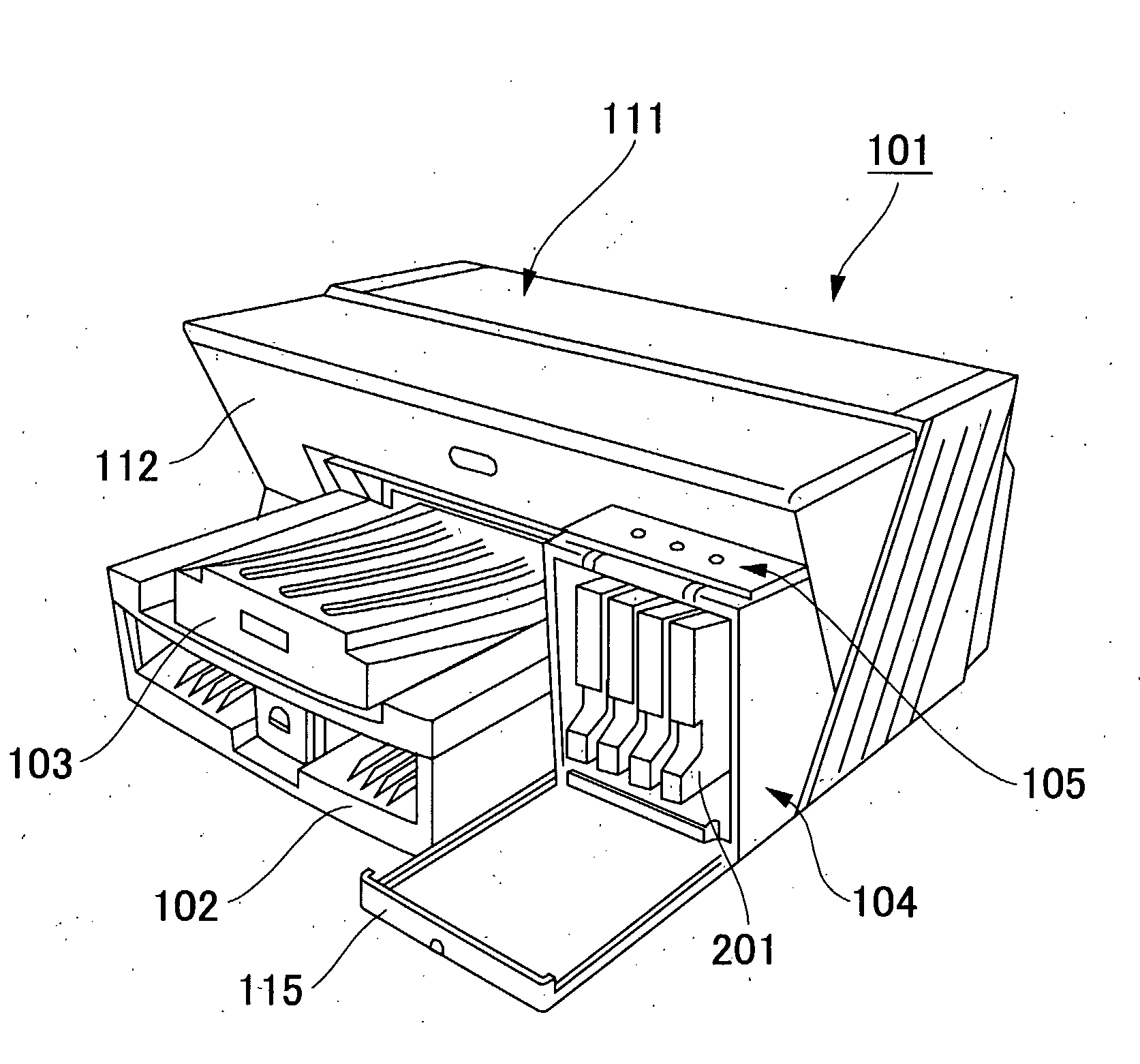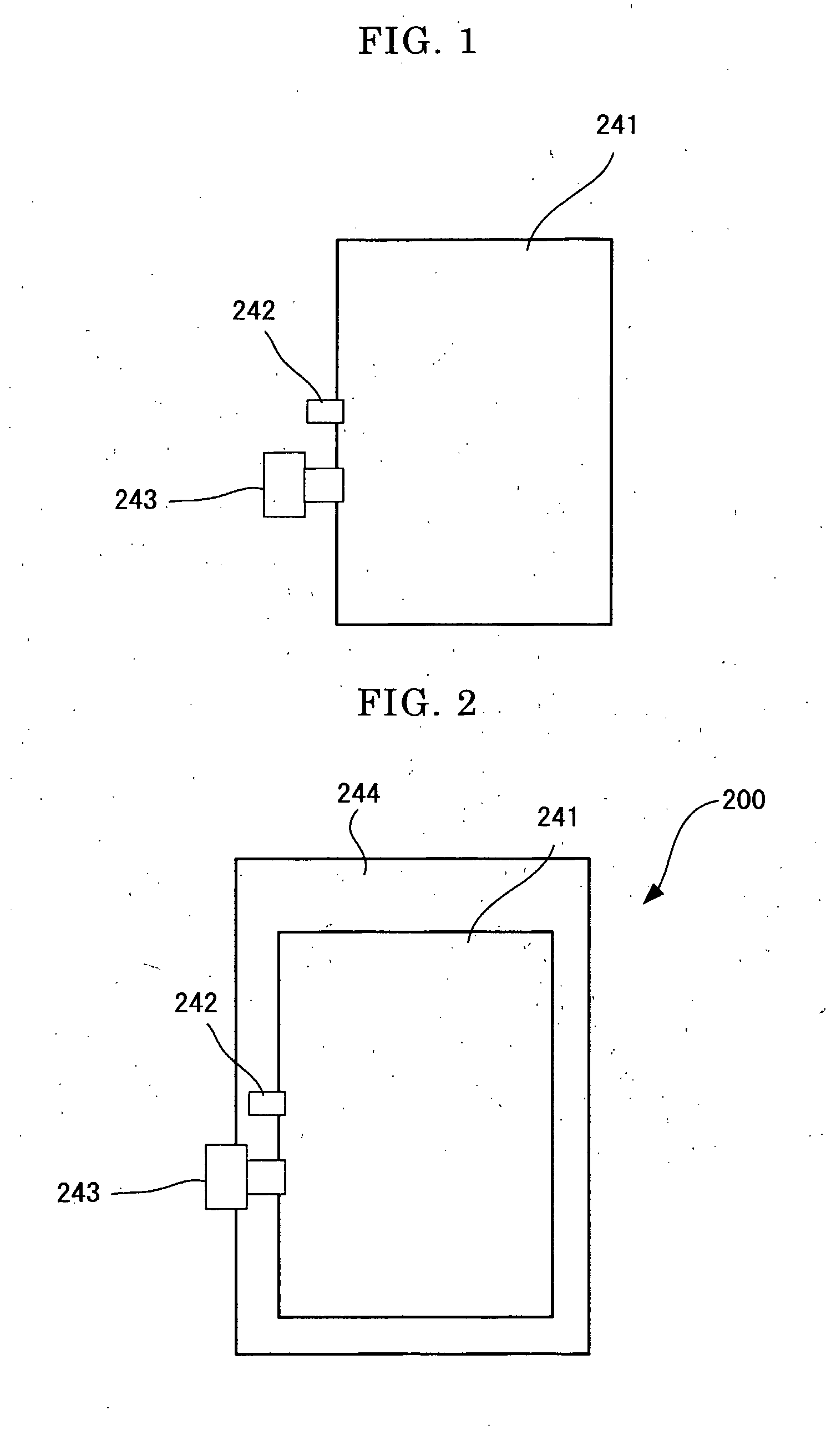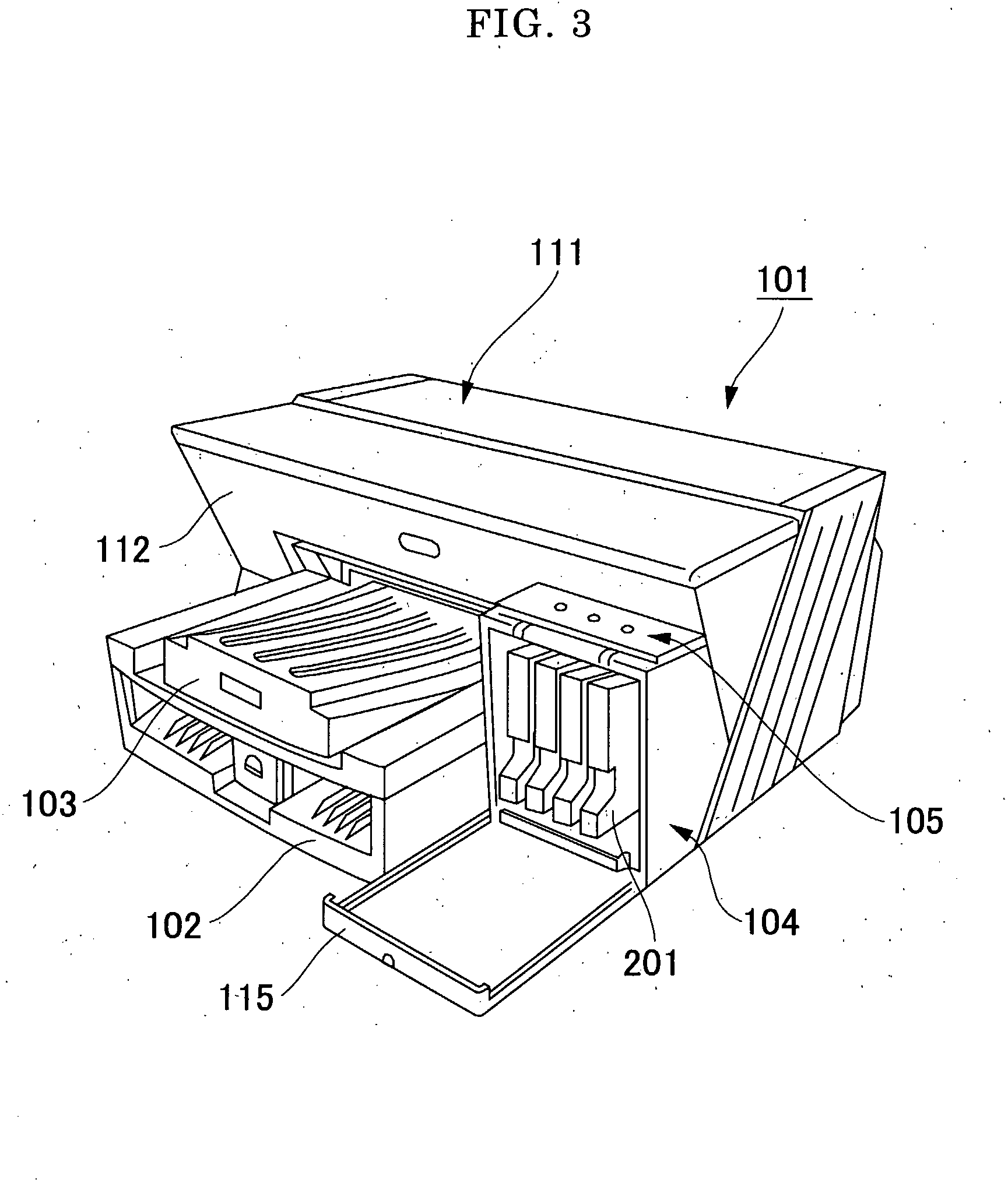However, it is very difficult for ink-jet printers to satisfy all of common properties such as color reproducibility, endurance,
lightfastness, image-
drying property, non-
feathering or non-bleeding of images, double-face printing and
discharge stability, thus inks are selectively employed considering important properties for respective applications.
Specifically, the
water resistance of images is unsatisfactory on regular paper, although it may be somewhat improved on dedicated ink-jet recording paper having an ink-absorbing layer.
However, it is impossible to micronize organic pigments into below their primary sizes regardless of any dispersants.
Furthermore, it is very difficult to reduce the particle size of organic pigments into 50 nm or less without degrading
color tone.
Furthermore, in cases where pigment dispersants of lower-molecular weights are employed, there exists a problem that
dispersion stability of pigments is inferior, pigments are likely to coagulate with aqueous solvents in inks; in cases where pigment dispersants of lower-molecular weights are employed, the dispersibility is likely to be poor due to higher velocities of pigment dispersions.
There exist also a problem that printed matters from these inks are insufficient for scratch resistance and
water resistance.
In cases where inks of dispersed organic pigments are utilized for ink-jet recording, however,
dispersion stability of pigments may be degraded under long-term storage in particular, thus the resulting coagulation of pigments may lead to clogging of ejection nozzles of ink-jet recording heads or non-ejection of inks.
Especially when the printing is suspended for a long period,
nozzle clogging is likely to occur, and the thickened inks may deposit within maintenance devices such as
nozzle caps or suction tubes, which possibly hindering the function of maintenance devices.
Furthermore, when printing is temporarily suspended or nozzles are stopped for a short period due to blanks or a single blank in printing documents, there often occur problems such as printing failures or intermittent
discharge-failures due to distorted-injection direction of ink droplets.
However, these surface-modified recording inks typically lack scratch resistance on regular paper or dedicated gloss paper, and represent poor water resistance.
In accordance with such a proposal, since the pigment particles are coated solidly by the resin, dispersion may be stable for a long period and the ejection stability may be improved; however, it is expensive and difficult to make the dispersion particle
diameter into 150 nm or less even pigments with a primary particle
diameter 50 nm to 100 nm are coated with the resin.
In accordance with this proposal, water resistance may be improved compared to inks utilizing dyes; however, lightfastness tends to be inferior to the inks utilizing dyes, thus the resulting inks are inappropriate for
actual use.
As such, in cases where dispersants are utilized for dispersing pigments or pigment surfaces are treated to be hydrophilic, a resin may be added to inks in order to complement the lack of water resistance and scratch resistance; however, it is typically impossible to obtain sufficient water resistance when water-soluble polymers are utilized.
For this reason, methods using water-dispersible resins are proposed; however, the water resistance is still insufficient since the printed resin particles on recorded matters may easily disperse into water again.
However, these composite pigment particles also suffer from the inferior dispersion stability in particular under long-term storage and insufficient water resistance and scratch resistance of printed matters because of containing no fixing resin.
However, these
polymer dispersants typically suffer from insufficient water resistance due to their water
solubility even though the scratch resistance may be sufficiently improved.
However, the dedicated ink-jet recording paper is relatively expensive since its production process involves multiple
coating processes after paper making and is inferior to the regular paper in terms of recycle ability because of containing many
processing chemicals; as such, sufficient
image quality on regular paper is desired currently.
The regular paper represents inferior ink-absorbability and less assistance in ink performances compared to dedicated ink-jet recording paper, therefore, there exist such problems in recording on regular paper as (1) occurrence of
feathering, (2) occurrence of bleeding, (3) reduction of density, (4) reduction of color developing property, (5) reduction of water resistance, (6) reduction of light resistance, (7) reduction of gas resistance, (8) reduction of fixing property, (9) show through of ink, and the like.
Such inks effectively reduce the bleeding and are easily dried on regular paper, meanwhile there exist such deficiencies as feathering, lower print density and lower print quality.
However, the lower permeability degrades remarkably the
drying ability after printing on the regular paper, thus resulting in deterioration of fixing ability and / or bleeding between colors in cases of multiple-color print.
However, in cases of double-sided printing using slow-
permeation inks, a period is required to wait ink-drying after printing, which deteriorate productivity of the double-sided printing.
However, such apparatuses suffer from enlarged and complicated systems and wasteful
heating energy due to additional heating devices, which diminish advantages the advantages of ink-jet recording.
Such inks, however, hardly produce high quality images on regular paper.
However, the ink is one containing a dye thus also likely to provide poor image-quality regardless of higher reliability.
Patent Literature 24 discloses an ink in which the
viscosity-increase is below 600 times comparing after to before water-
evaporation at 60° C. However, the ink is also one containing a dye thus the water resistance is still insufficient in
spite that reliability as well as durability are intended to increase by addition of water-
soluble polymer.
However, this literature includes no description in terms of particle-size stability of pigments, that is, the ink may lack reliability under long-term preservation depending on ejection heads and / or
nozzle sizes although it may be reliable after preservation for 24 hours.
As described above, it is necessary to use high-
viscosity inks in order to assure high-quality printing under higher velocities, meanwhile it is difficult to assure reliability of high-
viscosity inks.
Such inks' containing resin emulsions may suppress feathering through lowering the bleeding, however, are likely to lack reliability as ink-jet inks due to insufficient
image density.
However, the reliability of these inks is likely to be still unsatisfactory and the
image quality is insufficient still.
Suck inks tend to exhibit lower permeability into regular paper and are problematic in terms of feathering and / or bleeding, fixing ability and drying period.
This proposal may lead to higher water resistance compared to those containing dyes; however, image supporting property may be insufficient with respect to marker pens often utilized for regular paper.
However, these proposals suffer from lower
image quality due to insufficient permeability onto regular paper.
Patent Literatures 32 and 33 propose addition of polyvalent
alcohol alkylethers into inks of higher
solid-contents in order to improve permeability; however, these proposals suffer from lower image quality due to insufficient permeability in cases where the viscosity increases while the
solid content increases.
However, these proposals suffer from
hue change along with increase of pigment content in inks, thus it is difficult to attain favorable
hue at higher pigment contents, and also the water resistance and fixing ability acre likely to be insufficient in cases of self-dispersion pigments.
 Login to View More
Login to View More 


